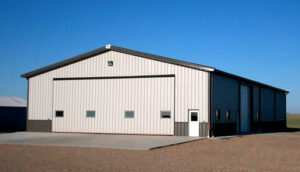The agricultural industry is evolving rapidly, and farms are increasingly embracing innovative technologies and structures to optimize productivity and efficiency. Among these advancements, prefab commercial buildings have emerged as a game-changer for modern farms. These structures offer numerous advantages over traditional construction methods, making them a compelling choice for farm owners looking to enhance their operations. In this comprehensive guide, we’ll explore the reasons why farms should seriously consider opting for prefab commercial buildings.
Speedy Construction
Prefabricated buildings are constructed off-site in controlled factory environments. This process allows for simultaneous manufacturing and site preparation, significantly reducing construction time compared to traditional building methods. Farms can swiftly set up the required infrastructure without prolonged construction periods, enabling quicker operations and revenue generation.
Cost Efficiency
Prefabricated buildings often come at a lower cost compared to conventional construction. The streamlined manufacturing process, reduced labor requirements, and minimized material waste contribute to cost savings. Additionally, these buildings offer energy-efficient features, potentially reducing long-term operational expenses.
Customization and Flexibility
Farms have diverse needs, and prefab commercial buildings offer customizable designs to suit specific requirements. Whether it’s a storage facility, processing unit, livestock shelter, or office space, these structures can be tailored to accommodate various functions. Moreover, they allow for future expansions or alterations, providing flexibility as the farm grows and evolves.
Quality and Durability
Prefabricated buildings undergo stringent quality control measures during the manufacturing process. Utilizing high-quality materials and advanced construction techniques ensures durability and structural integrity. These buildings are designed to withstand harsh weather conditions, providing a long-lasting and reliable infrastructure for farms.
Sustainability and Eco-Friendly Solutions
Many prefab buildings incorporate sustainable materials and construction practices, aligning with environmentally conscious farming practices. These structures can be equipped with energy-efficient systems, renewable energy sources, and water-saving technologies, contributing to a farm’s sustainability goals and reducing its environmental footprint.
Ease of Permitting and Compliance
Prefabricated buildings often have standardized designs that comply with building codes and regulations. This streamlined compliance process simplifies permitting, approvals, and inspections, saving time and avoiding potential regulatory hurdles for farm owners.
Adaptability and Mobility
Some prefabricated structures are designed to be relocatable or disassembled, offering farms the advantage of adaptability. This feature enables farms to adjust to changing needs, relocate facilities if necessary, or repurpose buildings as operational requirements evolve.
Technological Integration
Prefabricated buildings can seamlessly integrate modern technologies such as IoT (Internet of Things), automation, and smart systems. This integration facilitates efficient monitoring, control, and management of farm operations, enhancing productivity and decision-making processes.
Conclusion
The agricultural landscape is evolving, and farms need adaptable, efficient, and cost-effective solutions to stay competitive. Prefab commercial buildings present a compelling proposition for farms, offering a myriad of benefits ranging from cost-efficiency and customization to sustainability and technological integration. By embracing these innovative structures, farms can streamline operations, enhance productivity, and position themselves for a more sustainable and prosperous future.
Investing in a prefab commercial building represents a strategic move for farms aiming to modernize their infrastructure while optimizing resources. As technology continues to advance and sustainability becomes a focal point, the integration of prefab structures into farm operations becomes not just advantageous but essential for growth and success in the agricultural sector.


